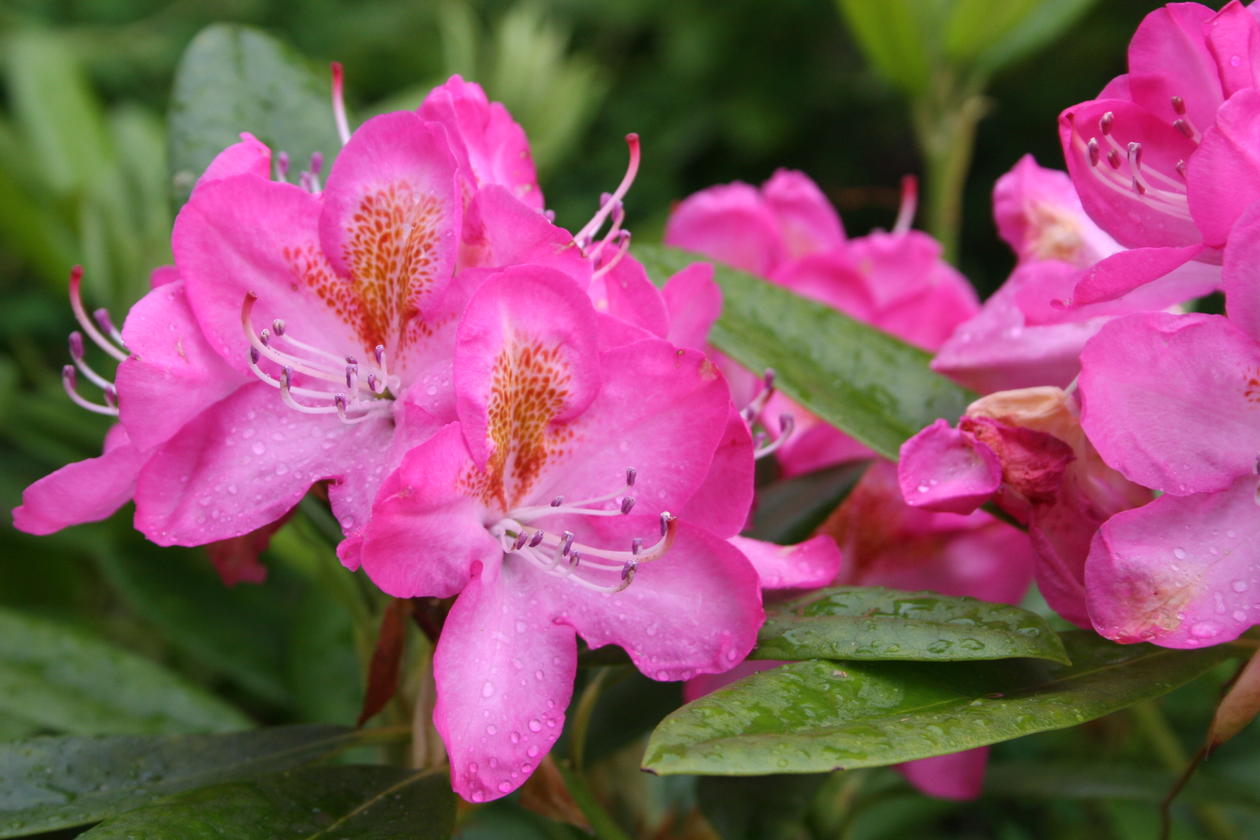4. The story continues
Rhododendron cultivars of the 19th Century, Part 2

Main content
The introduction of Rhododendron arboreum from the Himalayas gave new impetus to breeding efforts. As a species it is very variable in flower colour (from white to blood-red), hardiness, and leaf-form. This is also reflected in the cultivars that were developed from it. There are examples bearing pure white flowers, such as the low growing, Seidel hybrid ‘Helene Schiffner’ from Germany, but there are also red-flowered ones. The first near bright red was ‘Cynthia’ launched by Standish & Noble in 1856, a wonderful plant still worth growing. They had tried for at least 30 years to achieve this. Unfortunately, we do not have any of their earlier attempts in the collection, but we do have some of the prolific Waterer’s, the best example being ‘Sir Thomas Seebright’.
Large flowers were highly prized, too, but rather difficult to accomplish until species of the Rhododendron decorum-group were introduced. A good example of the large-flowered R. decorum crosses is the popular, well-known ‘Pink Pearl’, also a Waterer cross from about the turn of the century. ‘Loderi’, produced at around the same time, is another classic. I believe we have the clone ‘Venus’. The most magnificent is the Mangle’s cross ‘Beauty of Littleworth’ which has survived at Milde, though it is less hardy.
Another species of great impact was the yellowish white R. caucasicum which contributed to lower growing, denser plants and blotched flowers. The well-known ‘Cunningham’s White’ is one of its progeny.
Also in the collection: Rhododendron oreodoxa, R. oreodoxa var. fargesii, 'Frank Galsworthy', 'Gomer Waterer', 'Lady Anette de Trafford', 'Midnight Beauty', 'Midsummer'
